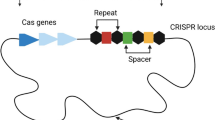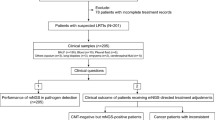Abstract
In India, drug-resistant tuberculosis (DR-TB) is a major public health issue and a significant challenge to stop TB program. An estimated 27% of new TB cases and 44% of previously treated TB cases are resistant to at least one anti-TB drug. The conventional methods for DR-TB diagnosis are time-consuming and have limitations, leading to delays in treatment initiation and the spread of the disease. Next-generation sequencing (NGS) based approaches have emerged as a promising tool for diagnosing DR-TB, simultaneously offering rapid and accurate detection of resistance mutations in multiple genes. NGS-based approaches generate a large amount of data, which requires efficient and reliable bioinformatics pipelines for data analysis. TBProfiler and Mykrobe are the bioinformatics pipelines that have been created to analyze NGS data for the diagnosis of DR-TB. These pipelines use reference-based and machine-learning approaches to detect resistance mutations and predict drug susceptibility, enabling clinicians to make informed treatment decisions. Implementing NGS-based approaches and bioinformatics pipelines for DR-TB diagnosis can potentially improve patient outcomes by facilitating early detection of drug resistance and guiding personalized treatment regimens. However, the widespread adoption of these approaches in India faces several challenges, including high costs, limited infrastructure, and a lack of trained personnel. Addressing these challenges requires concerted effort to ensure equitable access to and effective implementation of these innovative technologies.
Similar content being viewed by others
References
World Health Organization (2021) WHO global lists of high burden countries for tuberculosis (TB), TB/HIV and multidrug/rifampicin-resistant TB (MDR/RR-TB), 2021–2025: background document. World Health Organization, Geneva
Basnyat B, Caws M, Udwadia Z (2018) Tuberculosis in South Asia: a tide in the affairs of men. Multidiscip Respir Med 13:10
MacLean E et al (2020) Advances in molecular diagnosis of tuberculosis. J Clin Microbiol 58:10–1128
Pillay S et al (2022) Xpert MTB/XDR for detection of pulmonary tuberculosis and resistance to isoniazid, fluoroquinolones, ethionamide, and amikacin. Cochrane Database Syst Rev 5:CD014841
Madhuri K et al (2015) Utility of line probe assay for the early detection of multidrug-resistant pulmonary tuberculosis. J Glob Infect Dis 7:60–65
Dlamini MT et al (2019) Whole genome sequencing for drug-resistant tuberculosis management in South Africa: What gaps would this address and what are the challenges to implementation? J Clin Tuberc Other Mycobact Dis 16:100115
Yang T et al (2022) SAM-TB: a whole genome sequencing data analysis website for detection of Mycobacterium tuberculosis drug resistance and transmission. Brief Bioinform 23:1–11
Kamolwat P et al (2021) Diagnostic performance of whole-genome sequencing for identifying drug-resistant TB in Thailand. Int J Tuberc Lung Dis 25:754–760
Coll F et al (2015) Rapid determination of anti-tuberculosis drug resistance from whole-genome sequences. Genome Med 7:51
Phelan JE et al (2019) Integrating informatics tools and portable sequencing technology for rapid detection of resistance to anti-tuberculous drugs. Genome Med 11:41
Bradley P et al (2015) Rapid antibiotic-resistance predictions from genome sequence data for Staphylococcus aureus and Mycobacterium tuberculosis. Nat Commun 6:10063
Acknowledgements
The manuscript has been approved by the Publication Screening Committee of ICMR-NIRTH, Jabalpur and assigned with the number ICMR-NIRTH/PSC/35/2022.
Author information
Authors and Affiliations
Contributions
Conceptualization: VKT, JB; Methodology: VKT, NSP, SR, JB; Writing the original draft; VKT, Reviewing and editing: SR, JB.
Corresponding author
Ethics declarations
Conflict of interest
The authors declare that they have no conflict of interest.
Additional information
Publisher's Note
Springer Nature remains neutral with regard to jurisdictional claims in published maps and institutional affiliations.
Rights and permissions
Springer Nature or its licensor (e.g. a society or other partner) holds exclusive rights to this article under a publishing agreement with the author(s) or other rightsholder(s); author self-archiving of the accepted manuscript version of this article is solely governed by the terms of such publishing agreement and applicable law.
About this article
Cite this article
Tamrakar, V.K., Parihar, N.S., Bhat, J. et al. Strengthening the Diagnosis of Drug-Resistant Tuberculosis Using NGS-Based Approaches and Bioinformatics Pipelines for Data Analysis in India. Indian J Microbiol (2023). https://doi.org/10.1007/s12088-023-01134-0
Received:
Accepted:
Published:
DOI: https://doi.org/10.1007/s12088-023-01134-0




